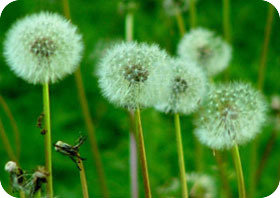
Saving seeds has been paralleled by many as putting money in the bank. Nowadays there is no shortage of people reaping the benefits of what they sow. The satisfaction of growing fresh produce is equal to nothing else and according to various sources, growing our own food may become a necessity.
More so than ever before there is an ever growing interest of people who are saving seeds, especially organic and heirloom seeds. Colette Murphy, owner of Urban Harvest in Toronto has been selling heirloom seeds for over a decade and she has seen this interest increase due to food security reasons.
There is not a doubt that extreme climate changes are upon us and will continue to worsen over the next few years or possibly decades. The Arctic as we know it is rapidly becoming a nothing more than a memory and this means trouble. The polar ice caps reflect solar radiation back into space and as the ice diminishes, our planet is absorbing greater levels of solar radiation. There are several factors that go into play as to why we’re losing the Arctic and methane from fracking is making things even worse. Illegal dumping of radioactive material into the northern seas, and the tens of thousands of nuclear detonations also play a role. As we lose the ice more methane is naturally being released from the Earth as tundra thaws.
So saving organic and heirloom seeds is a great idea but should the day come that we have to grow food to survive then those who have saved these seeds are at the mercy of what comes out of the sky. If it is a drought then there will be no garden harvest and if there are floods or an overly wet summer, the same thing, little or no produce.
Survival Seeds
The real survival seeds are the ones that are free and are available all over, edible wild plant seeds. Edible wild plants grow under the most unforgiving circumstances and many of these seeds last for an impressive 40 years. Curly dock seeds persist for 80 years and mullein an impressive 100 years. (Dandelion seeds persist only 5 years.)
The best part about collecting wild edible seeds is that many of these plants produce an impressive number of seeds. Lamb’s quarters (under optimum conditions) produce 55,000 seeds per plant.
Stored seeds will last longest when they are kept cool in a dry, dark location. Using an airtight container will protect seeds from changes in humidity. Glass jars with tight-fitting lids work well, or you can store them in seed envelopes. For more information on seed storing please check out the two links below.
Seed saving is without a doubt an investment. It is an investment in your food supply and especially an investment in the health of your family.
Sources:
http://www.motherearthnews.com/organic-gardening/seed-care.aspx?PageId=1#ArticleContent




We have been seed saving from our organic homestead garden for about a decade now. Never thought to wild craft seeds, but have certainly moved blackberry and other wild plants from one location to the other to propagate.
This is funny, I grow mostly wild edibles in my garden. I saved seeds and figured out how to grow them. Each has it’s own special needs. I found freezing wild carrot for a few months works best for them. For smilax I found putting them in small gravel and shaking them then soak them for a day or two works best for those. Anyways, I was proud of my garden and was showing a friend all my galinsoga, broad leaf plantain, burdock, lambs quarters you name it. My garden did great this year. He looks at it and said it is full of weeds lol. I just laughed and thought way I bet he has a high grocery bill.
Sorry meant wow not way.